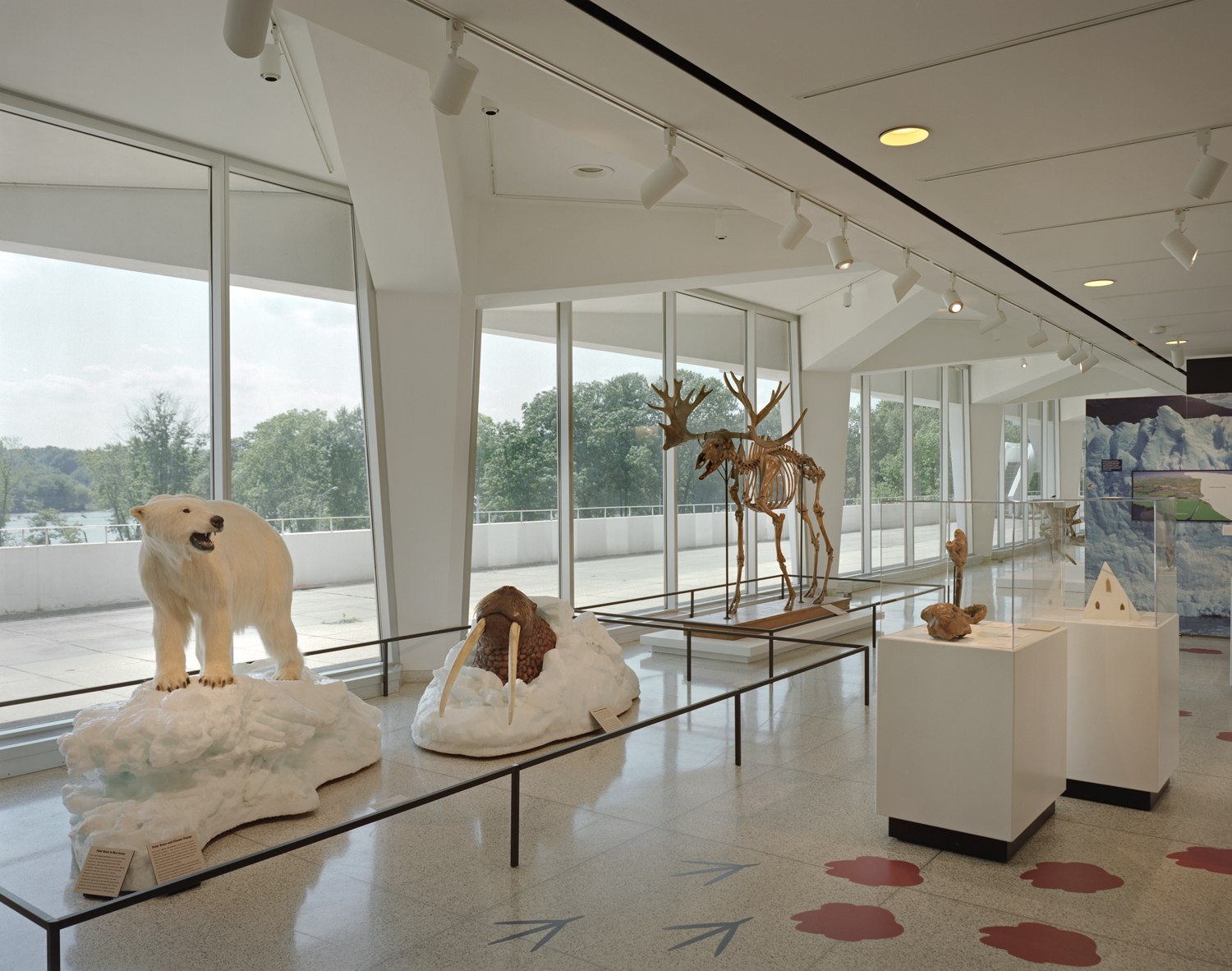Program: Master Plan, Museum & Archive
Construction: Renovation
Area: 80,000sf
The New Jersey State Museum traces its beginnings to 1895, when it was established by the legislature as one of the country’s first state museums. Initially, the focus of the collections was natural history, archaeology, and industrial history. Today, however, the museum embraces four areas of collecting: archaeology/ ethnology, cultural history, fine art, and natural history. The present facility, completed in 1965, is part of a larger cultural complex that stands in proximity to the State House and includes the State Library and a planetarium.
Farewell Mills Gatsch Architects, LLC (FMG) upgraded the New Jersey State Museum’s infrastructure and envelope while protecting the collections. The ultimate goal of the project was to have systems which support the museum's collections and exhibitions, facilitate the growth of the Museum, and strengthen its visibility as an important steward and disseminator of the state’s cultural and historic legacy. FMG was then engaged to re-envision the exhibition space and public experience at the New Jersey State Museum.
The re-envisioning of the exhibition space provided a tremendous opportunity to reinvent the museum in the public imagination. Long a repository and protector of New Jersey's cultural, natural, aesthetic, and ethnological history in the context of the national experience, the museum had an opportunity to give new focus and communicative clarity to its unique resources. A requirement of the re-visioning was the careful attention to the full range of the museum's public identity, including way finding, programming, accommodation of visiting school children, and attracting more tourists.




